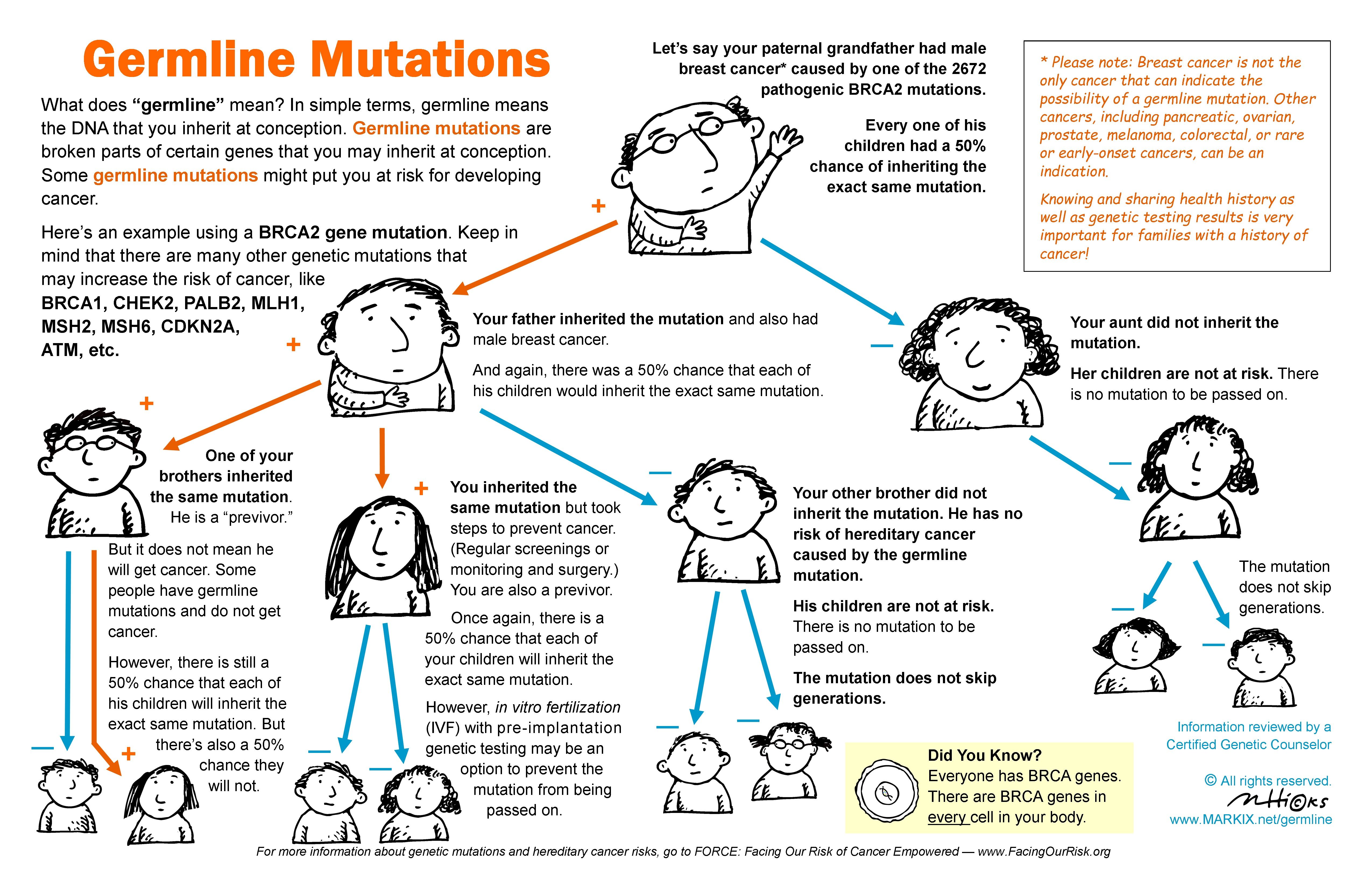Article
Picturing Germline Mutations
Author(s):
I don't remember the first time I heard the word "germline," but I do remember when it became a major part of my life.
I’m not sure when I first heard the term "germline." I’ve always been a bit of a science nerd, so I came across the word and learned the meaning at some point. But exactly when, I have no idea.
However, I distinctly remember encountering the word again back in 2015 as I was doing research for an illustration assignment I was working on for a children’s science magazine story. The title of the article was, "Could We Clone a Mammoth?" As you may have guessed, the piece was about cloning animals and the possibility of using ancient DNA to bring large hairy extinct elephants back to life.
What I did not know was how much the word "germline," coupled with another word, "mutation," would become a regular part of my vocabulary in the not-to-distant future.
The article was published, and the word germline forgotten until my late wife was diagnosed with triple-negative breast cancer a couple years later. That’s when genetic testing confirmed she had hereditary breast and ovarian cancer syndrome (HBOC) due to a germline BRCA2 mutation.
At the same time our daughter was also diagnosed with HBOC and the same mutation. Although she was only in her 20s, it was not impossible for our daughter to also have had cancer caused by the same genetic variant. Since first becoming aware of the mutation, I have learned of several other young women in their 20s with BRCA2 mutations and a cancer diagnosis.
Fortunately, our daughter did not have cancer. She is a previvor. With the knowledge of the mutation, our daughter has been able to take preventative steps to reduce her cancer risk.
My wife’s cancer could have been prevented too. Sadly, information about the germline mutation was not shared by family members who had been tested and found to have HBOC years earlier. It is because of this, and because my daughter carries the same BRCA2 mutation as her late mother, that I have become a hereditary cancer awareness and prevention advocate. In my advocacy, I try to focus on encouraging open and honest family communication when there’s any history of cancer in the family.
Since I’m also a professional artist and illustrator, I often use my experience and talent in my advocacy to help individuals and families better understand hereditary cancer and how it is often possible to prevent it.
Professional illustrator and blogger, Mark Hicks, made a graphic to explain germline mutations such as BRCA, and how they work.

Needless to say, I often mention "germline" when talking about hereditary cancer and the mutations that can cause it. However, I’ve come to realize that many people really do not have any idea what that word means and how it relates to a family history of cancer. So I decided to create a graphic and have it reviewed by a certified genetic counselor. Then I posted it on my blog and on social media.
In the graphic, I use a germline BRCA2 mutation as an example. But there are actually over 50 known hereditary cancer syndromes caused by different germline mutations, according to the National Cancer Institute. But regardless of the type, if you have a germline mutation, there is no difference in the odds of it being passed on.
My challenge was to keep it as simple as possible but somehow fit in all the important details. Unfortunately, I had to leave out some related information and that led to some questions by those seeing the graphic. Which leads me to my next challenge: creating a simple, illustrated graphic explaining the difference between a germline mutation and a somatic mutation.
For more news on cancer updates, research and education, don’t forget to subscribe to CURE®’s newsletters




